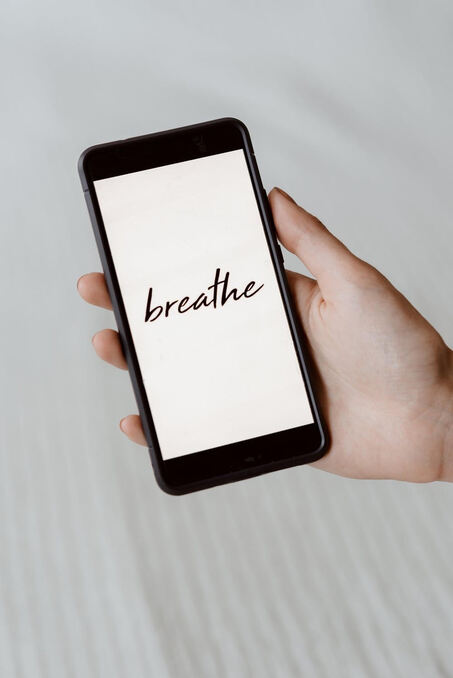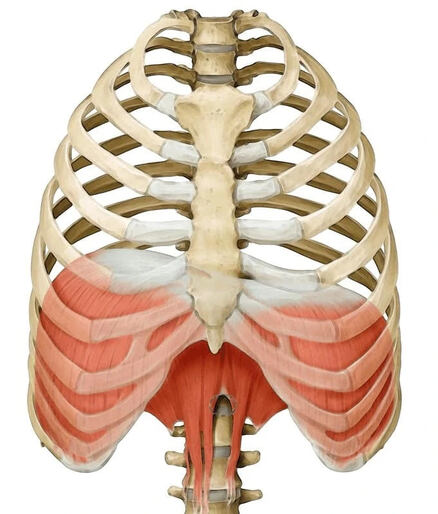Your Body's Most Powerful Weapon You're Not Using
Dec 13, 2021
Breathing. Seemingly, the most innate skill set you have as a human being. So innate that it’s used as a benchmark for being a healthy newborn and your first time taking a breath happens within the first 10 seconds you enter this world. Fast forward to adulthood and you’re breathing an average of 12 to 20 times per minute without a single thought. With all that practice, we must be pretty good at it; right? Not exactly. Stress, lifestyle choices, and mechanics all play a huge role in how we breathe, and all breath is not created equal.
Want an example of just how easily influenced our breathing patterns are? Look no further than something called “Email Apnea.” Yeah, that’s a real term, and it’s used to describe the phenomenon of people holding their breath when they read their email. One study by Business Insider found that upwards of 80% of people actually do this and I bet if you pay attention you’ll catch yourself doing it as well.
But who cares? It's just reading emails, and if we don’t even notice it's happening it must not be that big of a deal; right? Wrong. When we interrupt our normal breathing patterns by either not breathing or taking short shallow breaths, we’re creating a stress response in our body, and when we do this over prolonged periods of time, it can have profound consequences on our health. That’s because our brain can’t decipher between the stress of being chased by a bear and the stress of being behind for an important work deadline. To the brain, stress is stress and breathing short, shallow breaths is one of the main ways our brain interprets stress. All this to say that shallow breathing is both a cause of increased stress and a symptom of increased stress responses, creating a vicious negative feedback loop leading people to live in a chronically stressed state of mind. Here are some examples of how detrimental this can be on your health.
- Decreased ability to fight acute illness (COVID, anyone?)
- Increased risk of heart attacks, strokes, and other cardiovascular illnesses
- Decreased Cognitive Function such as memory recall
- Increased susceptibility to panic attacks and anxiety
- Chronic Pain
- Headaches
Here’s the good news though: The negative health consequences associated with prolonged disturbances in our breath can be easily prevented with just a little awareness and some intention. Simply taking longer, deeper breaths using your diaphragm (vs your chest) has been demonstrated time and time again to prevent the effects of chronic stress. The key word here though is “longer.”
As we recently discussed on the Active Atlanta Podcast with therapist Megan Gillsespie, a big mistake commonly made when we tell people to “take a deep breath” is they do just that! We take this huge inhale and then quickly exhale all that air back out. All the focus is on the inhale, when it should be on the exhale.
When we focus on slow, long exhales instead of long inhales only, what we start to do is upregulate our parasympathetic nervous system, which puts our body into a relaxed state. By simply increasing the durations of our exhale, we can reduce anxiety, lower blood pressure, improve sleep, decrease pain, improve concentration, and so much more. It’s a true biohack that is free, easy, and incredibly powerful.

So, how do you do it? Do you just take long exhales and call it a day? While not wrong, there’s a more organized and effective way of doing so and it's called “parasympathetic breathing.” You can practice this technique by lying on your back with your feet up on the wall (as demonstrated in this video) and use a 4-7-8 breathing pattern, where you inhale for 4 seconds, hold your breath for 7 seconds, and exhale for 8 seconds. Set a timer for five minutes and repeat this pattern. Try not to fall asleep in the process! Be sure to use your diaphragm instead of your chest when doing this by simply putting one hand on your stomach and another hand on your chest. When you inhale and exhale the only hand that should be moving is the one on your stomach. Once you get the hang of it, feel free to make this less formal and start implementing throughout your day, at your desk, in your car, etc. It doesn't matter where, just make it a part of your daily habits.
At Athletes' Potential, we have a profound understanding for how the body works and how your sleep, stress management, nutrition, and movement practices all coalesce to create a healthier life. If you’re dealing with low back pain, chronic pain, recurring injuries, or a nagging injury that’s preventing you from living life at your highest capacity, give us a call or click the button below and we’ll call you!
We help people just like you every single day. Whether you’re someone who doesn’t know where to start or has had an unsuccessful rehab experience, we’re confident we can help you as well.
Thanks for reading,
Dr. Jake, PT, DPT, CSCS
Let us help you figure out to live your best active life today!
Remember, Movement is Medicine!

